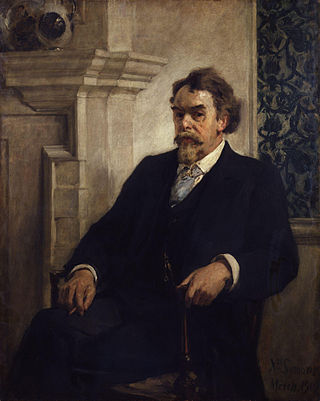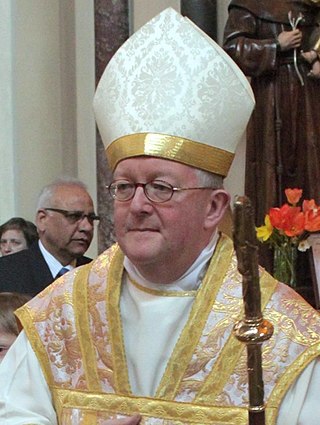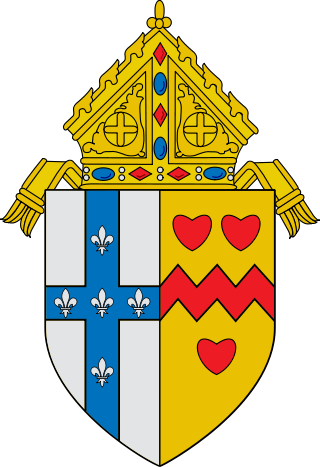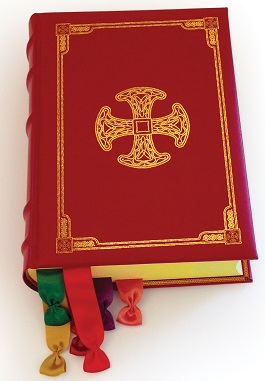
John Francis Bentley was an English ecclesiastical architect whose most famous work is the Westminster Cathedral in London, England, built in a style heavily influenced by Byzantine architecture.

Vincent Gerard Nichols is a British cardinal of the Roman Catholic Church, Archbishop of Westminster and President of the Catholic Bishops' Conference of England and Wales. He previously served as Archbishop of Birmingham from 2000 to 2009. He was created cardinal in 22 February 2014.
Anglican Papalism, also referred to as Anglo-Papalism, is a subset of Anglo-Catholicism with adherents manifesting a particularly high degree of influence from, and even identification with, the Roman Catholic Church. This position has historically been referred to as Anglican Papalism; the term Anglo-Papalism is an American neologism and it seems not to have appeared in print prior to the 1990s. Anglican Papalists have suggested "that the only way to convert England is by means of an 'English Uniate' rite". Anglican Papalists have historically practiced praying the Dominican rosary, among other Marian devotions, Corpus Christi procession, as well as the reservation of and Benediction of the Blessed Sacrament.

St Etheldreda's Church is a Roman Catholic church in Ely Place, off Charterhouse Street in Holborn, London. The building is one of only two surviving in London from the reign of Edward I, and dates from between 1250 and 1290. It is dedicated to Æthelthryth, or Etheldreda, the Anglo-Saxon saint who founded the monastery at Ely in 673. It was the chapel of the London residence of the Bishops of Ely.

Bernard Longley is an English prelate of the Roman Catholic Church. He was named the Archbishop of Birmingham on 1 October 2009, and installed on 8 December 2009.

St Dominic's Priory Church is one of the largest Catholic churches in London. The church is Grade II* listed building on the National Heritage List for England. It has been served by the Order of Preachers (Dominicans) since 1861, the community living in the adjacent Priory. In October 2016, the church was solemnly inaugurated by the Cardinal Archbishop of Westminster, Vincent Nichols, as a diocesan shrine, with a designated mission of promoting the Rosary.
The Sardinian Embassy Chapel was an important Catholic church and embassy chapel attached to the Embassy of the Kingdom of Sardinia in the Lincoln's Inn area of London. It was demolished in 1909.

The Personal Ordinariate of Our Lady of Walsingham in England and Wales is a personal ordinariate in the Latin Church of the Catholic Church immediately exempt, being directly subject to the Holy See. It is within the territory of the Catholic Bishops' Conference of England and Wales, of which its ordinary is a member, and also encompasses Scotland. It was established on 15 January 2011 for groups of former Anglicans in England and Wales in accordance with the apostolic constitution Anglicanorum coetibus of Pope Benedict XVI.

The Personal Ordinariate of the Chair of Saint Peter is a Latin Church ecclesiastical jurisdiction or personal ordinariate of the Catholic Church for Anglican and Methodist converts in the United States and Canada. It allows these parishioners to maintain elements of Anglican liturgy and tradition in their services. The ordinariate was established by the Vatican in 2012.

Our Lady of Victories, in Kensington, London, is a Roman Catholic church. The original church opened in 1869, and for 34 years to 1903 served as pro-cathedral of the Archdiocese of Westminster. That building was destroyed by bombing in 1940: its successor, which survives, opened in 1959. The church stands at 235a Kensington High Street, Kensington, in the Royal Borough of Kensington and Chelsea.

The Church of the Immaculate Conception, Farm Street, also known as Farm Street Church, is a Catholic parish church run by the Society of Jesus in Mayfair, Central London, England.

St James' Church is a large English Gothic Catholic church in George Street, Marylebone, London. Although currently situated in George Street, the church maintains its connection with Spanish Place, the road opposite the current church, because of its historic connection with the Spanish Embassy. It is a Grade II* listed building.

The Embassy of Spain in London is the diplomatic mission of Spain in the United Kingdom. The embassy is located at 24 Belgrave Square in the Belgravia area of London. Spain also maintains a Consulate General at 20 Draycott Place in Chelsea, a Defence Office at 3 Hans Crescent in Knightsbridge, an Education, Employment & Social Affairs Office at 20 Peel Street in Holland Park, and an Economic & Commercial Section at 66 Chiltern Street in Marylebone.

Divine Worship: The Missal (DW:TM) is the liturgical book containing the instructions and texts for the celebration of Mass by the former Anglicans within the Catholic Church in the three personal ordinariates of Great Britain, United States and Canada, and Australia. The rite contained in this missal is the Anglican Use, a liturgical use of the Roman Rite Mass with elements of Anglican worship. It was approved for use beginning on the first Sunday of Advent, November 29, 2015.

Our Lady of Ransom Church is a Roman Catholic Parish church in Eastbourne, East Sussex. It was founded as a mission in 1869, built from 1900 to 1903, and had extensions completed in 1926. It is situated on the corner of Meads Road and Grange Road, opposite Eastbourne Town F.C. in the centre of the town. It was designed by Frederick Walters and is a Grade II listed building.
An embassy chapel is a place of worship within a foreign mission. Historically they have sometimes acted as clandestine churches, tolerated by the authorities to operate discreetly. Since embassies are exempt from the host country's laws, a form of extraterritoriality, these chapels were able to provide services to prohibited and persecuted religious groups. For example, Catholic embassy chapels in Great Britain provided services while Catholicism was banned under the Penal Laws. A similar role was filled for Protestants by the Prussian embassy chapel in Rome, where Protestantism was unlawful until 1871. Upon laws granting freedom of religion, these embassy chapels have often become regularized churches and parishes, such as that of the Dutch embassy chapel to the Ottoman Empire, now The Union Church of Istanbul.

Corpus Christi Roman Catholic Church, Maiden Lane, is a Roman Catholic church in Maiden Lane, Covent Garden, in the Westminster City Council area of London, England. The church building, in Early English Gothic style, is grade II listed and was designed by F. H. Pownall; it was “specifically devoted to the adoration of the Blessed Sacrament.”

St Anselm's Church is a Catholic church which is part of the Personal Ordinariate of Our Lady of Walsingham in Pembury, Kent, England. It was originally founded in the 1960s as a chapel-of-ease later serving as a mass centre before becoming its own quasi-parish within the personal ordinariate in 2011, following a conversion of a large number of Anglicans in Royal Tunbridge Wells.




















